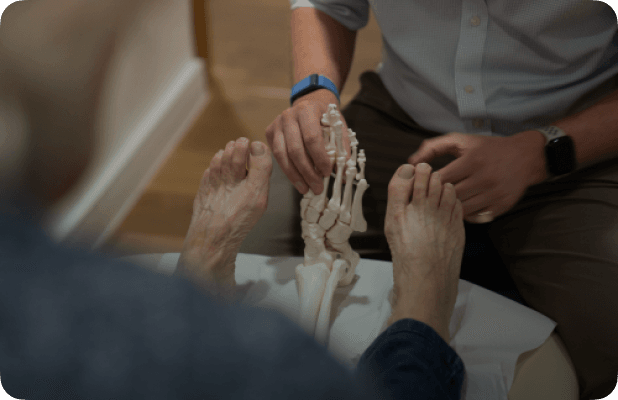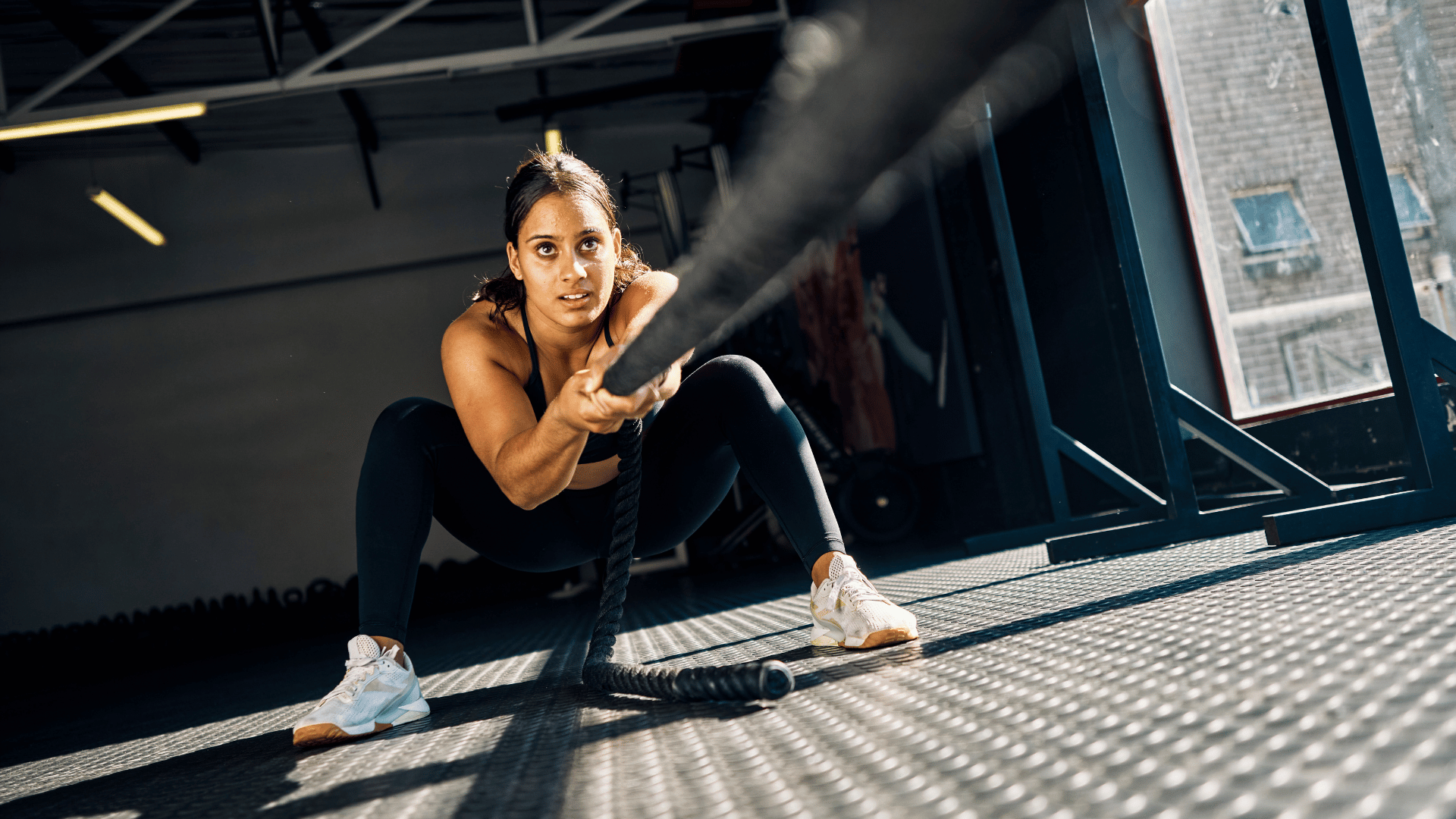Plantar Fasciitis: Causes, Symptoms & Effective Treatment Options

Claire Small
Chief Clinical Officer & Consultant Physiotherapist
- 31 January, 2020
- Lower Limb
- Exercise
- Running
- Podiatry
- 5 min read
Plantar Fasciitis: Causes, Symptoms & Effective Treatment Options

Plantar fasciitis (more accurately known as plantar fasciopathy) is the third most common injury in runners. Although common, it can sometimes be stubborn to treat – hence the list of available treatments.
Anatomy
The plantar fascia is a band of fibrous tissue that extends from the heel bone to the metatarsal bones (ball of foot). It supports the arch and takes a lot of load during walking and running.
Symptoms
Pain tends to be felt in the sole of the foot with tenderness specifically mostly, but not always, around the inside of the heel. Often the first few steps in the morning are painful but this gradually settles as you continue walking.
Running, walking barefoot, going onto your toes or going up stairs all tend to aggravate the pain.
Causes
The exact cause of plantar fasciitis is poorly understood. It is thought to be thought to occur when there is an increased load placed on the plantar fascia (the ligament that connects your heel bone to your toes), either by certain activities, like running, patient’s an individual’s specific biomechanics or training error i.e. “too much, too soon”.
Factors that can be involved are:
- Biomechanics – Any biomechanical factor that increases the stress on the plantar fascia may have a role, this can include excessive pronation (rolling in), leg length discrepancy, poor control of movement at the knee and hip
- Tissue tightness – the most common cause is often considered to be tight calf muscles. The Achilles tendon blends with the plantar fascia so if it is tight it places greater stress on the fascia
- Footwear – Old or inappropriate footwear can lead to increase stress and cause pain. See below for tips
- Muscle weakness – weak calf, Tibialis Posterior muscle (muscle located within the back side of the calf which provides stability) and intrinsic foot muscles.
Treatment
The list of options is extensive and includes:
- Stretching
- Muscle strengthening
- Footwear advise
- Running technique
- Extracorporeal Shockwave Therapy (ECSWT)
- Radiotherapy
- Low dye taping
- NSAID’s
- Surgery
- Tension night splints
- Myofascial Trigger point therapy
- Corticosteroid infiltration
- Custom orthoses and prefabs
- Infiltration of platelet-rich plasma
Settle your symptoms
Firstly, aim to settle your symptoms as best as possible, namely by resting from aggravating factors such as walking bare feet, running or prolonged standing. In mild cases you may be able to modify these things (e.g. only running as far as is pain free or using different shoes) rather than resting altogether.
Stretch the calf and plantar fascia
Calf stretches
Probably the most widely recommended treatment. If calf tightness is an issue for you try stretching both muscles:
- Gastrocnemius – by leaning with both hands on a wall and taking one foot a step behind the other and bending at the elbows to lean closer to the wall, feeling the stretch in the back of your leg
- Soleus – again with both hands on the all and one foot a step behind the other, this time bending in the back leg knee to feel the stretch in the front of your leg.
Hold each for 30 seconds 3-5 reps, 2-3 times per day. In both cases the leg at the back is the one being stretched.
Specific stretches for the plantar fascia
Cross the leg of the affected side over the other leg. Grasp the toes and stretch the toes upward. Hold the stretch for 10 seconds, repeat 10 times. Do 3 times per day, including before you take your first steps in the morning.
Stretch the mid foot over a cold or frozen bottle (beware of ice burn doing this)
Place a gentle pressure down on the water bottle with your foot (you can also use a tennis ball, however an iced water bottle may be more effective), stretching the middle of the foot and roll it backwards and forwards for approximately 10 minutes. Be sure to stop if it is too painful.
Strengthening of muscles
Single leg squat
Start with a simple control exercise that has the added benefit of working into ankle range of movement. It helps increase awareness of movement (proprioception) and serves as a useful warm up to prepare the foot and ankle for the more challenging exercises.
Modified calf raise – Rathleff et al. (2014)
A progressive heavy loading programme using the modified calf raise (with a towel) is very effective in treating plantar fasciitis. The addition of weight helps to strengthen the foot and calf muscles, hopefully aiding in load tolerance and absorption.
Begin barefoot, with a rolled-up towel underneath your toes, slowly push up into calf raise, hold at the top, then lower. The speed is about 3 sec up, 2 sec hold and 3 sec down. Do 3 sets and 12 reps per leg.
If it’s painful or too hard start on 2 legs, if it’s too easy gradually increase load under supervision of healthcare professional.
Strengthening inversion and eversion
Tibialis posterior provides support to the arch of the foot. Sit with your legs straight and with a belt or towel tied around your foot. By pulling on one end of the belt, move your sole towards the outside and then to the inside as far as you can. Maintain the position and repeat.
Toe flexor strength
Toe flexion exercises can improve strength and jump performance. We place them at the end as the modified calf raise is also challenging for these muscles. Push your toe down against the resistance. Hold for 3 sec, relax for 3 sec. Repeat 5-10 times per foot.
Intrinsic muscles of the foot
A common exercise for this is using the toes to pick up marbles or scrunch up a towel.
Footwear
It can be difficult to come up with a “one-size fits all approach” but a combination of support and cushioning would be ideal. Support the fascia without irritating it. If you are running in flat or minimalist shoes these could also cause or aggravate symptoms due to the much smaller (or non-existent) heel drop.
Changing your training
There’s always some debate over whether you should continue to run or rest with Plantar Fasciitis. This decision will vary considerably based on each individual’s situation and needs to be discussed with your health professional.
Changing running gait
Again, there is no “one-size fits all” and should be based on individual assessment by a podiatrist. However, there are changes which should reduce load that may be associated with plantar fasciitis.
- Take shorter, faster steps
- Run with a quiet, soft footfall.
If you make these changes make sure they are comfortable and don’t create pain elsewhere or make running feel much harder.
Returning to running
This can be a challenge with any injury. My initial advice would include:
- Gradually increase your distance
- Avoid hills initially
- Ideally it should be pain free when running and for around 48 hours after
- If your pain increases in this time or the overall trend is that it’s getting worse, you may have to rest until it’s more settled
- Warm up and cool down – Prior to running it’s important to loosen the calves a little with a dynamic calf stretch
Plantar fasciitis is a multi-factorial injury. It can be challenging to treat. It is important to try and identify the cause and address it. Rest or modifying training, ice, offloading and anti-inflammatories may help to settle symptoms.
Stretching the calf and fascia, strengthening the calf and intrinsic muscles will also help reduce symptoms. Changes to training and running technique may be helpful and have the potential to reduce load on the plantar fascia and help symptoms. However emerging research is focussing on progressive loading programmes.
Therefore combining load modification with an increased fascial load capacity while addressing individual contributing factors may prove the most effective approach for long term treatment of plantar fasciitis.

Advice
Over the last 20+ years our experts have helped more than 100,000 patients, but we don’t stop there. We also like to share our knowledge and insight to help people lead healthier lives, and here you will find our extensive library of advice on a variety of topics to help you do the same.
OUR ADVICE HUBS See all Advice Hubs

